Readers conversant with Buddhism (especially Zen) will find much that is familiar, but this is no dry doctrinaire treatise. The authors have a pleasant conversational style and a lighthearted approach to religious practice. They strive to make Buddhist spiritual ideals intelligible to Westerners.
Library Journal
ABOUT THE BOOK
According to the Vajrayana Buddhist tradition, Dzogchen is the direct experience of enlightenment. In Roaring Silence, Vajrayana teachers Ngakpa Chgyam and Khandro Dchen walk the reader through the meditation techniques that enable us to sidestep the bureaucracy of intellectual processes and experience ourselves directlyto discover this direct experience of enlightenment that is the mind of Dzogchen.
Surprisingly, the approach is very pragmatic. Offering an investigation of the necessary steps, the authors begin with how to prepare for the journey: the lama is essential; as are a sense of humor, inspiration, and determination. They continue by describing the path of Dzogchen from sitting meditation to the direct perception of reality.
The chapters include exercises for sharpening the presence of our awareness, for simple visualizations, and for investigating how to remain uninvolved with mental activity for a periodwith follow-up guidance on how to view our experiences. Both practical and inspirational, the authors exquisitely precise guidance is all presented with the caveat, be kind to yourself, dont push yourself beyond your limits.
NGAKPA CHGYAM and KHANDRO DCHEN, both Westerners, are teachers in the Nyingma School of Vajrayana Buddhism in the lineage of the Aro gTr. A married couple who teach together, they spend much of their time traveling and teaching in Europe and the United States. They live in Penarth, Wales.
Sign up to learn more about our books and receive special offers from Shambhala Publications.

Or visit us online to sign up at shambhala.com/eshambhala.
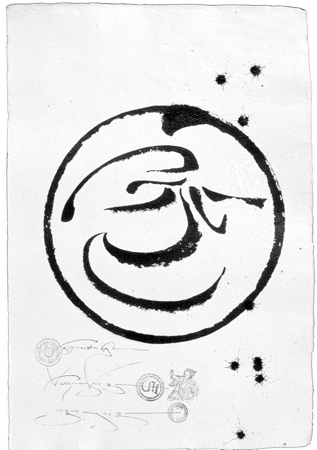
Roaring Silence

DISCOVERING THE MIND OF DZOGCHEN
Ngakpa Chgyam & Khandro Dchen

SHAMBHALA
Boston & London
2013
SHAMBHALA PUBLICATIONS, INC.
Horticultural Hall
300 Massachusetts Avenue
Boston, Massachusetts 02115
www.shambhala.com
2002 by Ngakpa Chgyam and Khandro Dchen
Cover photograph by Lee Weingrad
All rights reserved. No part of this book may be reproduced in any form or by any means, electronic or mechanical, including photocopying, recording, or by any information storage and retrieval system, without permission in writing from the publisher.
Library of Congress Cataloging-in-Publication Data
Nga-kpa Chgyam.
Roaring silence: discovering the mind of Dzogchen / Ngakpa Chgyam and Khandro Dchen.1st ed.
p. cm.
eISBN 978-0-8348-2882-7
ISBN 1-57062-944-7
1. Rdzogs-chen (Rnin-ma-pa) I. Khandro Dchen. II. Title.
BQ7662.4 .n49 2002
294.3420423dc21 2002005562
This book is dedicated to
Kyungchen Aro Lingma,
and to the g-kar-chang-loi-d,
the ngakphang tradition of the Nga-gyr Nyingma.
If there is any value to be found in this book,
it is entirely due to the inspiration of the Nyingma lineages.
Any faults are entirely due to our own inadequacies.

Om Aa  Hung Bendzra Guru Jnana Sagara Bam Ha Ri Ni Sa Siddhi Hung
Hung Bendzra Guru Jnana Sagara Bam Ha Ri Ni Sa Siddhi Hung 
Om Aa  Hung Bendzra Guru Pema Siddhi Hung
Hung Bendzra Guru Pema Siddhi Hung 
Contents


S PIRITUAL TEACHINGS are living language, potent and transformative. Spiritual language confronts the hegemony of nihilism in its own stronghold, the domain of the thinking mind. Dharma teachings, Dharma books, are not to be read merely as an intellectual pastime but approached as windows into possibility, opening the minds territory out beyond the confines of egological rationale.
In the Tibetan Vajrayana tradition, before studying a text, one receives a reading transmission from a master of the text. This reading transmission is received by hearing the text from the lips of one who has embodied its meaningin whom the word has become lived experience. Transmission is the moment when communication becomes communion and information opens into the possibility of transformation. Transmission ensures that we understand that even the words themselves are alive with the potent force of the sacred. If we enter into the living vision expressed in books such as Roaring Silence, we discover ourselves to have become something other than what we were, but not yet what we can be. We enter into a view of potential realization but have not yet realized this view in the fullness of our lives. We become a pregnant space, and then, if we so choose, through meditation and action we can give birth to profound realization of our Buddha nature.
The great masters of Vajrayana have always understood that information alone does not bring about transformation. No amount of collected data will ever answer the question that humanity finds itself to be. What is conveyed through a Dharma teaching is not mere information but something subtler, less tangible. The language of Dharma flows from spiritualitys lived experience as the natural impulse, energy, and thrust of compassion, and carries with it the subtle potency that is transmission. Such language not only affects our cognitive framework but acts upon the whole of our lives, our world, and our relationship to our world, through internalization of view. In the tradition of the Nyingma lineage, this power of language to communicate view is part of the triad of view, meditation, and action that constitutes the path. As Ngakchang Rinpoche and Khandro Dchen express so well in the opening of this book: In order to feel replete, the intellectual sense needs to masticate, digest, and excrete. The intellectual appetite needs to be directed away from the processed abstractions of philosophical junk food. Intellect itself needs to taste the manner in which it functions as a method of obscuring the nature of Mind.... This is where the use of intellect stops being a pastime or a conspiratorial battlefield of conflicting notions. This is where intellect becomes a valuable tool with which we can begin to prompt interesting departures from the experiential myopia of the materialistic rationale. This is known as the development of view.
Next page
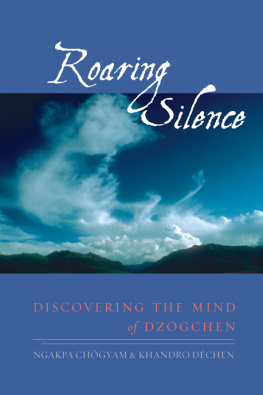
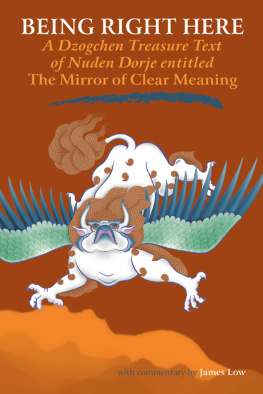
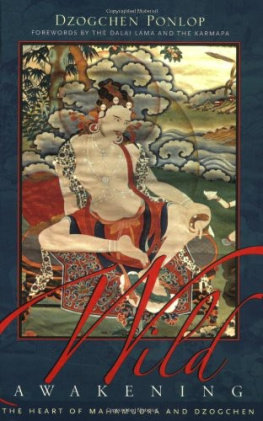
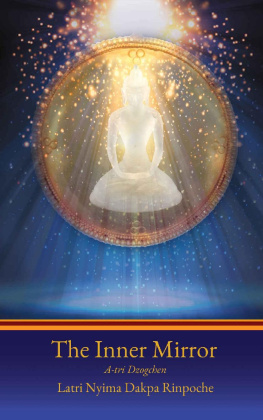

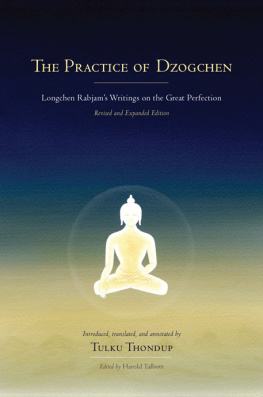
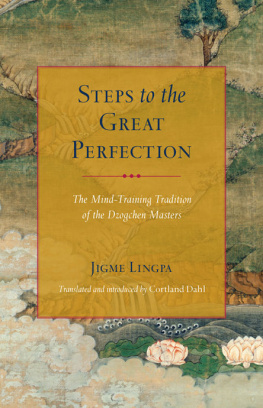
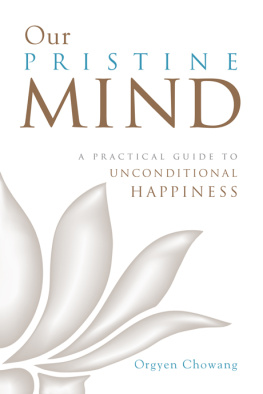
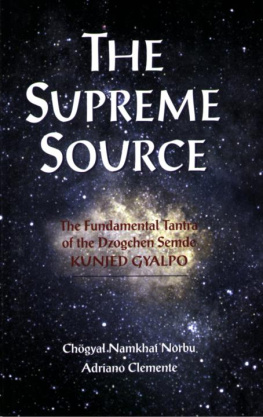





 Hung Bendzra Guru Jnana Sagara Bam Ha Ri Ni Sa Siddhi Hung
Hung Bendzra Guru Jnana Sagara Bam Ha Ri Ni Sa Siddhi Hung